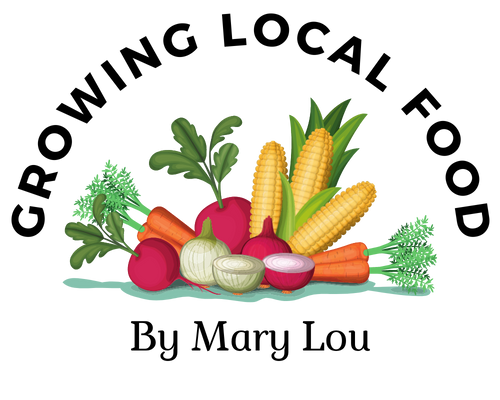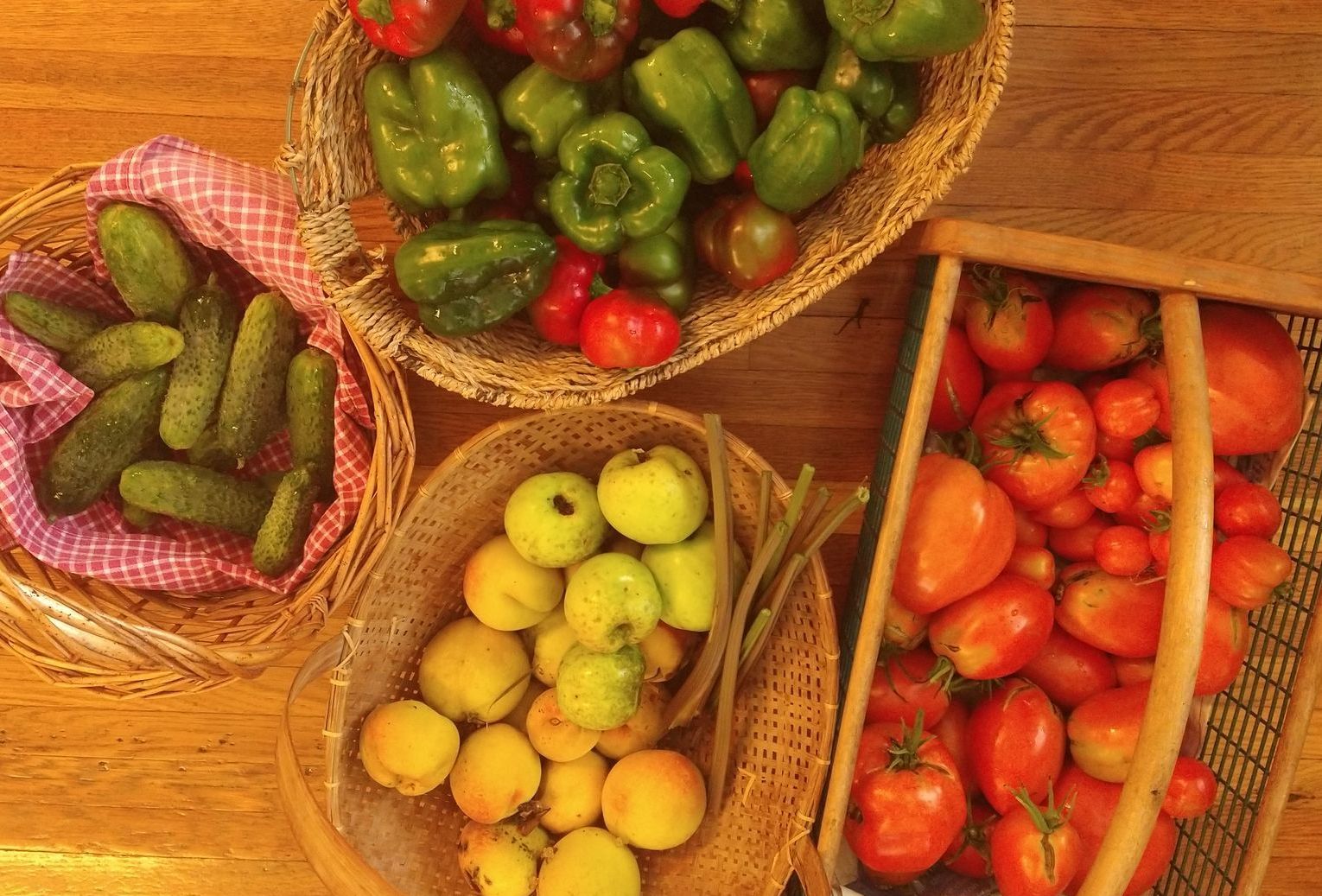Planning Your Garden for Healthy Plants and Produce
Our Goals when Gardening:
We all have different situations for our gardens. Some of you are wanting to begin gardening. Some only have a balcony that is heavy with pots of vegetables and flowers. Others have a raised beds in the front or back yards. Those will more land might have a large garden that produces some or most of their food.
Whatever our situation, we growers mostly agree that we want to maximize our harvests as well as the flavor and nutrition of our produce. At the same time, I think we agree that we want to reduce the time we spend weeding and also minimizing plant diseases and garden pests without using harmful chemicals.
What is most surprising when listing these goals is that there is one main rule to achieving them; do not plant the same plants in the same place two years in a row. This simple rule of crop rotation is the basis of keeping plants disease-free without chemicals as well as producing delicious and nutrient-dense produce.
Reasons for Crop Rotation:
Rotating our plants each year will be a big step in becoming successful gardeners. It increases the quality and quantity of your produce and decreases your work for the following reasons:
- Rotation reduces disease and insect pests. Each crop has particular diseases and pests that are attracted to it. These will build up in the soil if the same plants are grown there each year. The result is a steady decline in how much plants produce. An annual change in the location of each crop keeps their production high without the use of harmful chemicals for pest control.
- Rotation also makes it easier to control weeds by preventing them from becoming established. Different crops have different depths to their roots and require different types of tillage. They also attract different types of weeds. Weeds can’t get established as easily when crops are rotated.
- Another big reason for rotating crops is to balance their nutrient demands. Some groups of plants need high nitrogen in the soil, while others donate nitrogen. Other groups need potassium, while others crave phosphorus. Plants can be rotated to an area each year where they are assisted by what grew in that place the previous year.
General Principles for Rotating Crops:
Let's first talk about how to group our plants for rotation. Then we'll talk about the practicalities of making this happen.
Vegetable plants can be divided into four groups that do well when planted together. This is one aspect of "companion planting." Planting them together, and rotating annually in this order, keeps nutrients balanced and also gives natural pest control. I have a three-ring binder in which I keep the following chart each year so I can remember what plants get planted where the following year. Each group is planted in a specific order in relationship with the other three groups as follows:
#1 Leaf plants need high nitrogen, as from compost. These include: lettuce, salad greens, spinach, broccoli, Brussels sprouts, cabbage, cauliflower, kale and kohlrabi.
#2 Fruiting plants need high phosphorus. Compost with animal manure supplies phosphorus, as well as bone meal and fish emulsion. These plants include squashes, cucumbers, melons, pumpkins, tomatoes, peppers and eggplants.
#3 Root plants need high potassium. This is the rotation that we might add ashes from the wood burning stove. These include onions, shallots, garlic, scallions, leeks, carrots, beets, turnips and radishes.
#4 Cleaners and Builders include the "cleaners," corn and potatoes as well as beans and peas which are considered considered “builders” because they increase nitrogen in the soil.
To make this practical, in the late winter I take out my farm journal to begin planning for the next year's garden. I redraw it for what plants will go where in the coming season.
Although we can add soil amendments like ashes, this rotation actually allows the plants that were in the previous year's rotation to nurture this year's plants.
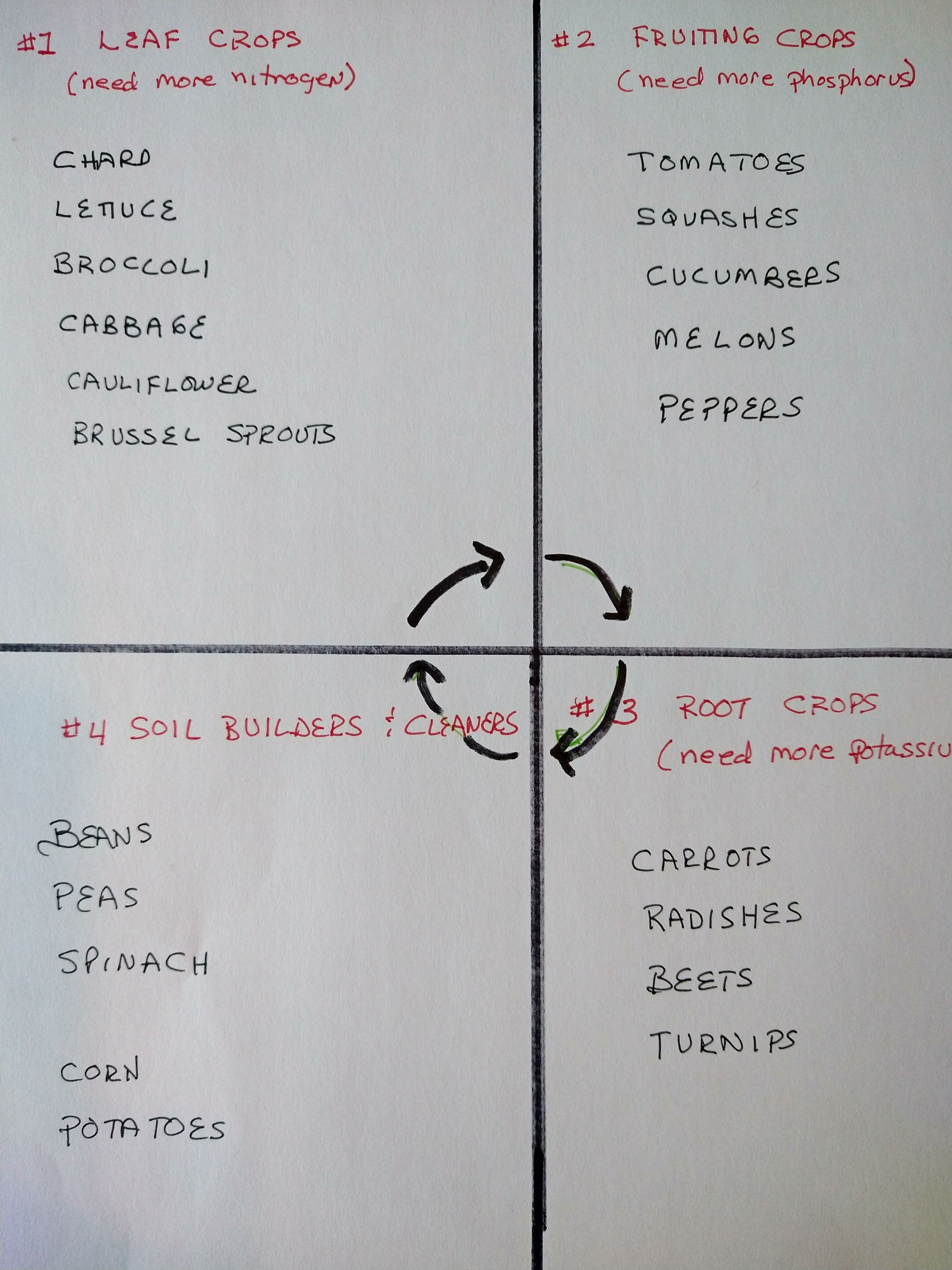
One year's garden plan in my farm journal
Rotation in raised beds:
There are no set rules for how to achieve this rotation in the correct order. However, for raised beds, I've just gone left-to-right in four linear sections. If you have more than one raised bed, just use your farm journal to keep track of what went where the previous year!
This photo shows two of our four raised beds. We can not only rotate what is planted in each bed annually, but also by season.
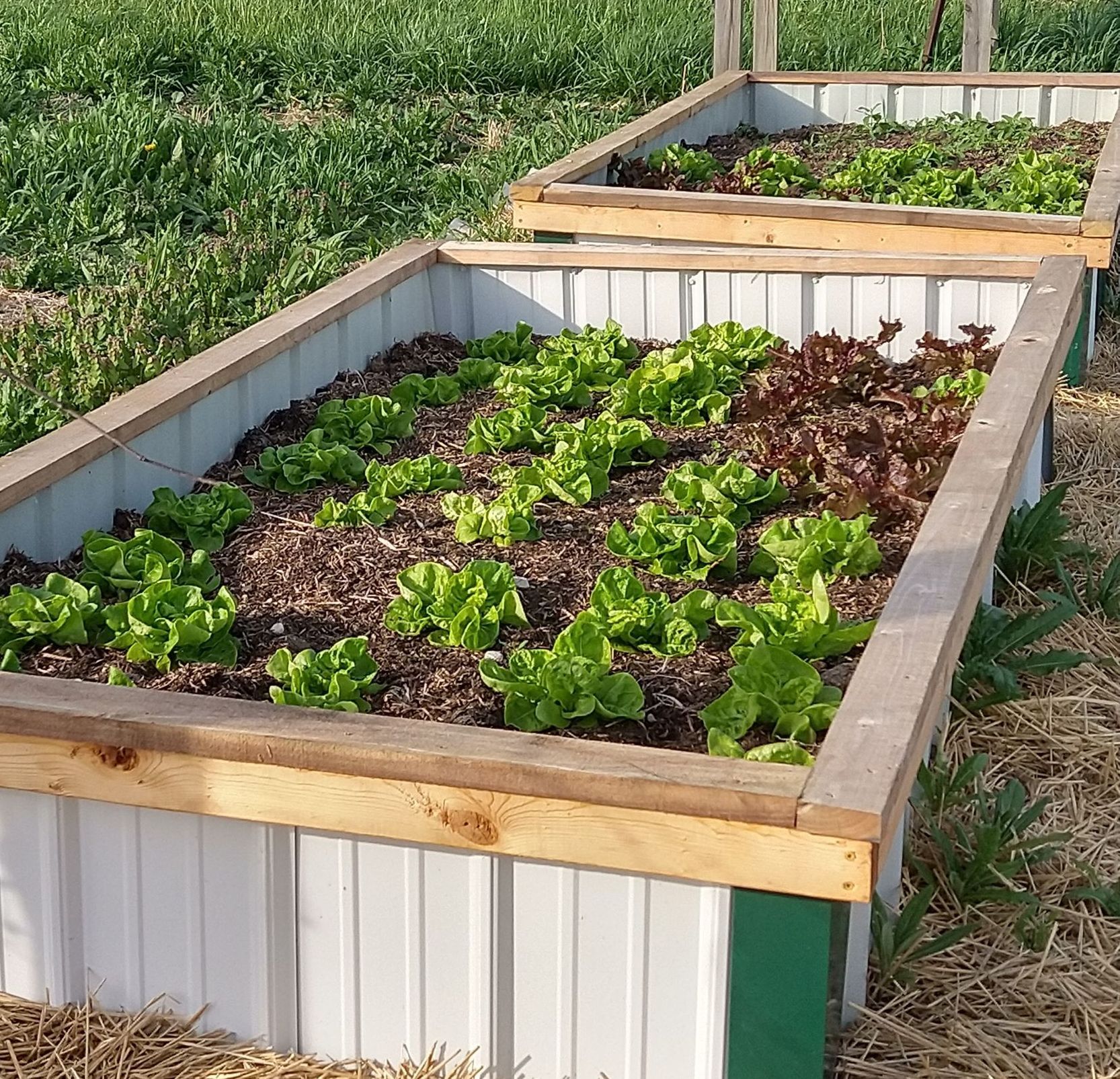
Where do perennials go?:
We certainly aren't going to move our perennials annually. The precious rhubarb and asparagus take some years to get established and now produce enough for generous harvests. Even strawberries can be perennials when the shoots are allowed to root.
My solution in the large garden is to just leave perennials in place and plant the different annual plants around them in their correct rotation. I admit that the strawberries occasionally get moved to various homes--in a raised bed or even the hoop house.
No one is grading our efforts, so let's do what works best for us and the health of our gardens!
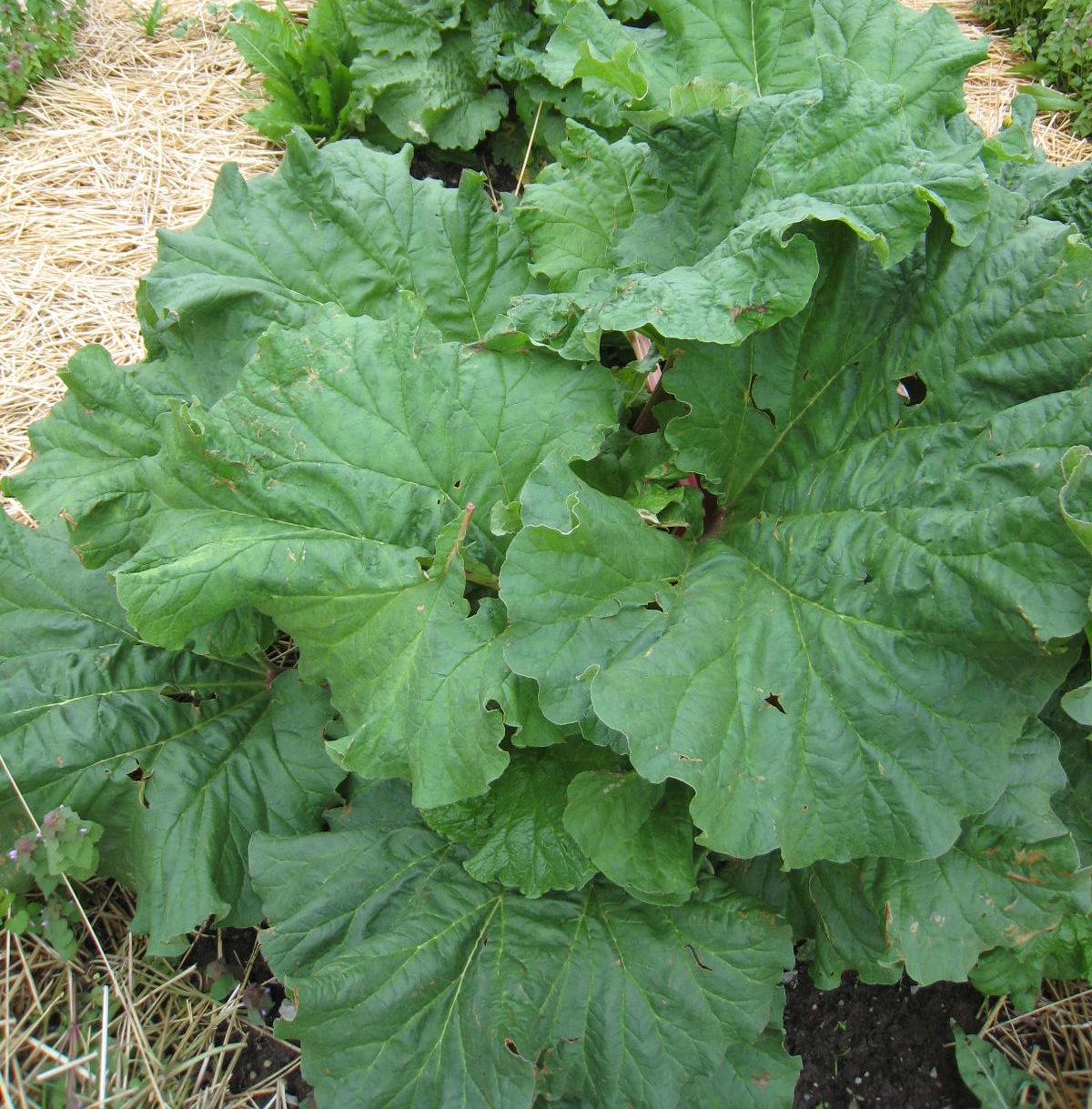
Balancing different sized plants when rotating:
There’s another difficulty with crop rotation; all quadrants don’t take the same amount of space. For example, squash vines never fit where the little root crops did. My answer to that is to go back to the simplest rule—don’t plant the same thing in the same place two years in a row. It’ll fit somewhere—just don’t plant it where it was the previous year! Having the garden journal insures that I know where things were the previous year.
Another solution is offered in the book,
The Vegetable Gardener's Bible. To allow shorter growing plants to get sunlight, trellised plants like tomatoes, beans, peas and cucumbers, along with corn, are located and rotated separately in the northeastern side of the garden. In this way, plants that grow tall won't shade the smaller plants.
Making Room for Humans:
Walking paths:
If you've planted around your home, pathways or in raised containers, you can easily care for your plants without stepping into their space. But for larger gardens, separate trodden paths and growing areas provide a permanent arrangement for your garden. This also prevents topsoil from becoming compressed as we walk through the garden.
Consider making your paths from 12 to 18 inches wide. Twelve-inch wide paths are sufficient for walking. Our garden paths are 18 inches wide because I’m more comfortable with kneeling when planting or weeding. There are no set rules for your design, so create a garden that suits you best.
You don’t want to spend time and energy weeding paths. Instead, cover paths with newspaper or cardboard and then layer them thickly with straw. These materials will gradually break down to become organic material for your garden. Layer them thickly and they’ll service you through the growing season.
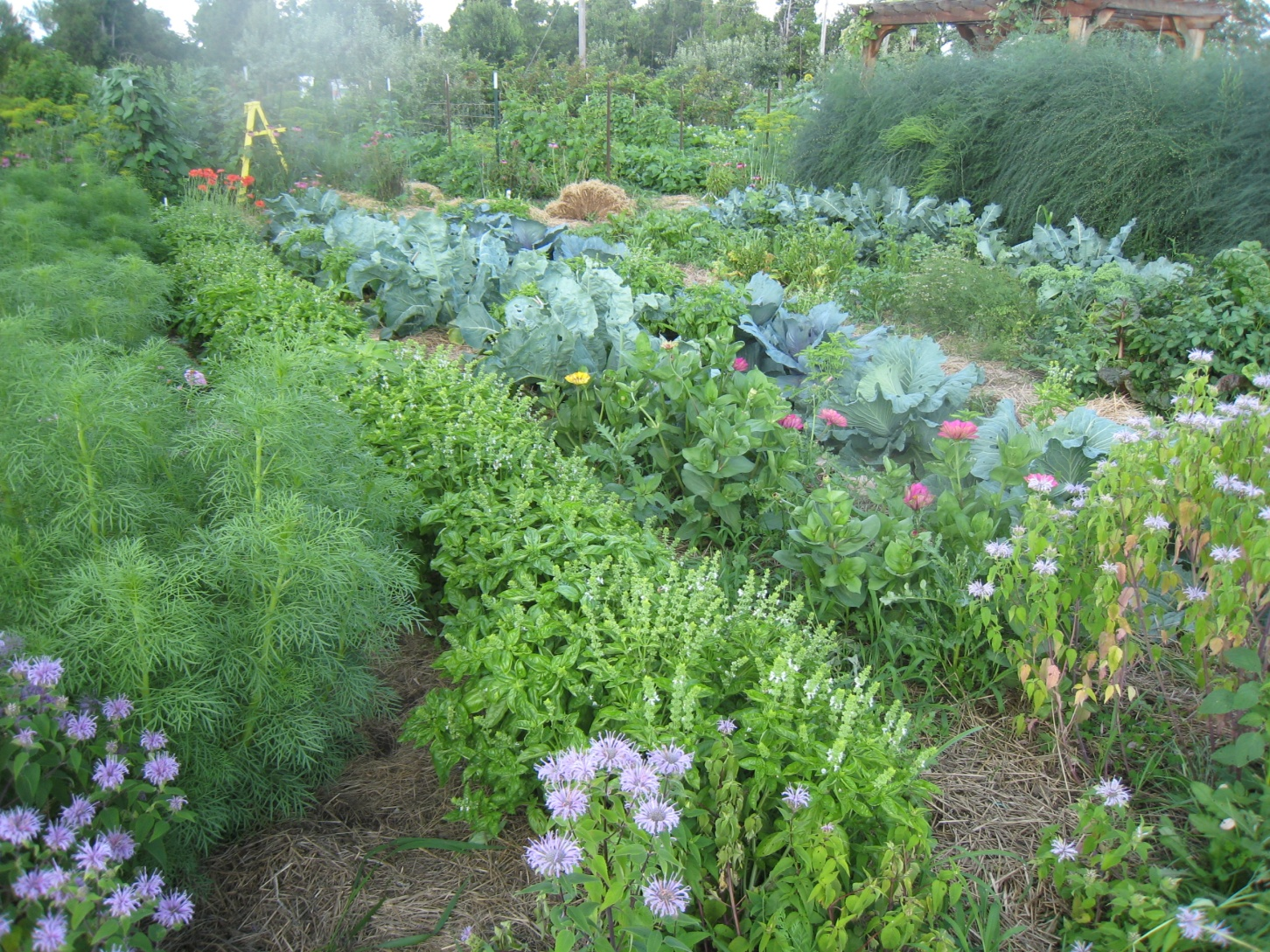
Growing space:
I’ve talked about walking paths, so now let’s discuss growing space. Thirty inch-wide beds, between walking paths, work well for plants. These beds will gradually become “raised beds” if you add compost each spring. This method reduces or eliminates rototilling, and so improves soil by not disturbing it.
Growing-areas that are 30 inches-wide work well because they accommodate plants of different sizes: Tomato or cabbage plants fit well in a single row, or you can plant two rows of medium-sized plants, like beans. Finally, this space is perfect for three rows of smaller plants like onions or beets.
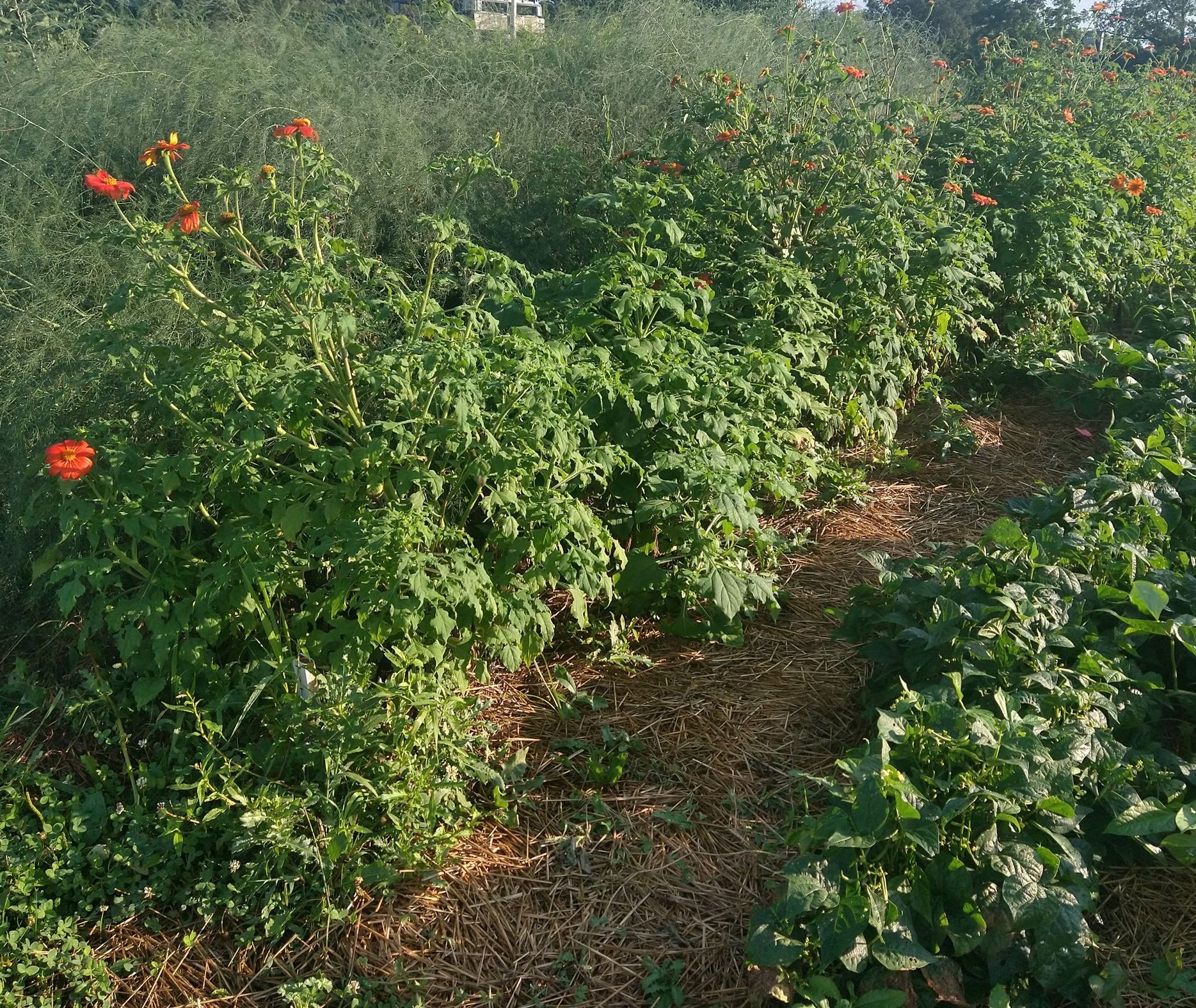
Can you picture your garden now? Permanent paths lessen your work and allow you to walk comfortably without compressing the plants’ growing space. Be imaginative when laying out the paths and beds. Your garden doesn’t have to be a rectangle--a circle, triangle, square or elongated garden may be fun and attractive in your yard.
You want to enjoy being in your garden, so make it a welcoming space. Flowers will entice beautiful and beneficial insects in like butterflies and pollinators. I enjoy watching the hummingbirds and swallowtails on the zinnias and delight that goldfinch enjoy the sunflower seeds.
Why not add a bench for you and a bird house for your feathered friends? We put a pergola in the center of our large garden and rotated the four quadrants around it. It's true that somedays I may spend as much time sitting and enjoying as I do weeding, but that's probably okay too. We're feeding our spirits as well as our bodies!
-
How do I begin to plan a new garden?
Start on paper with a diagram of the garden then, with a list of what you want to plant, begin to write what you will plant and where. Take into account what plants do well together, companion planting, and how you might want to rotate them the next year so the same things won't be planted in the same area. Finally, place the tallest plants on the north side so they won't shade the other plants.
-
What's the best way to lay out a garden?
It works best to plan your garden on paper first, and that makes for an enjoyable winter project. Remember to put tall plants on the north side and keep track of which plants grow well together.
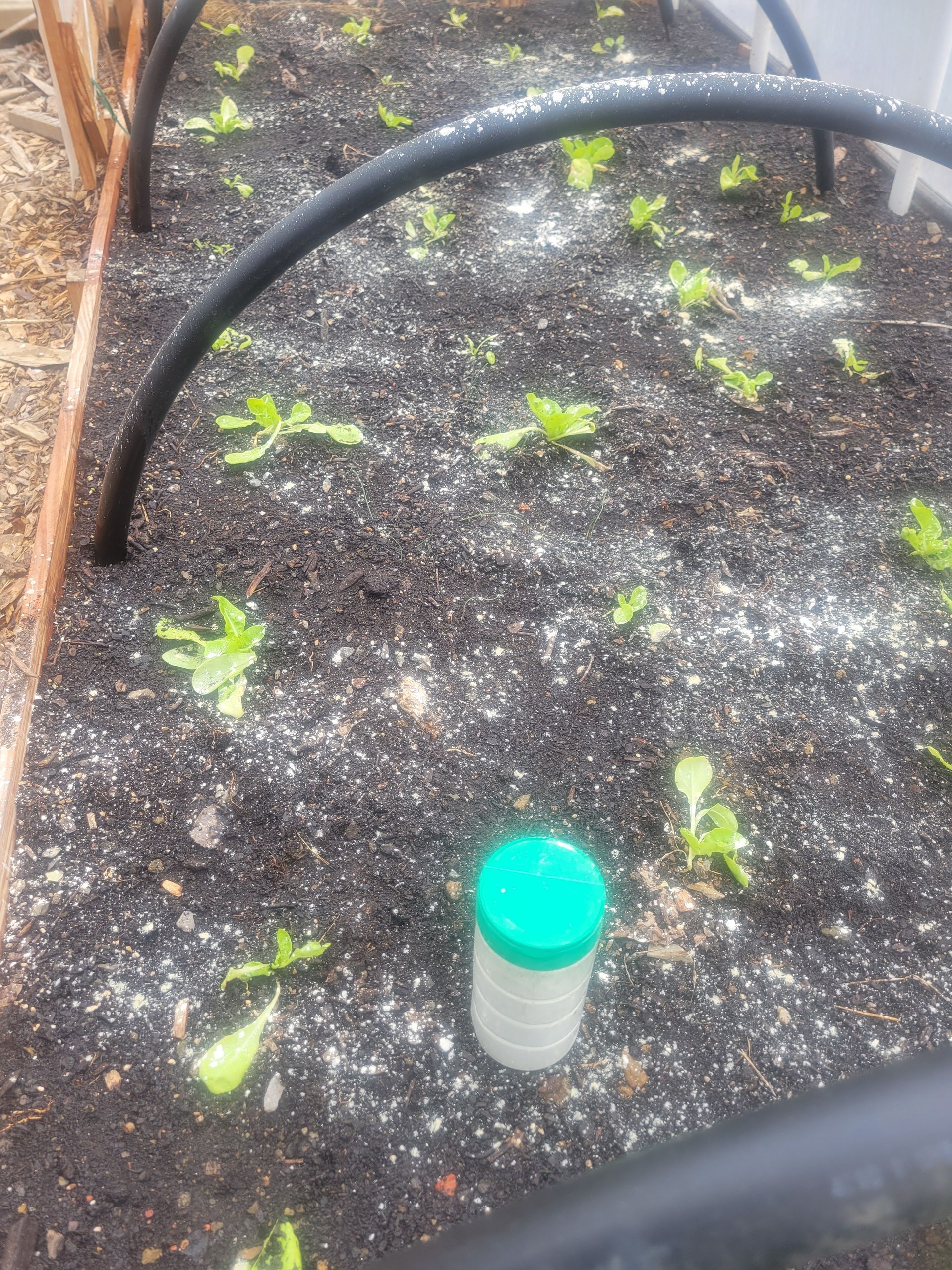
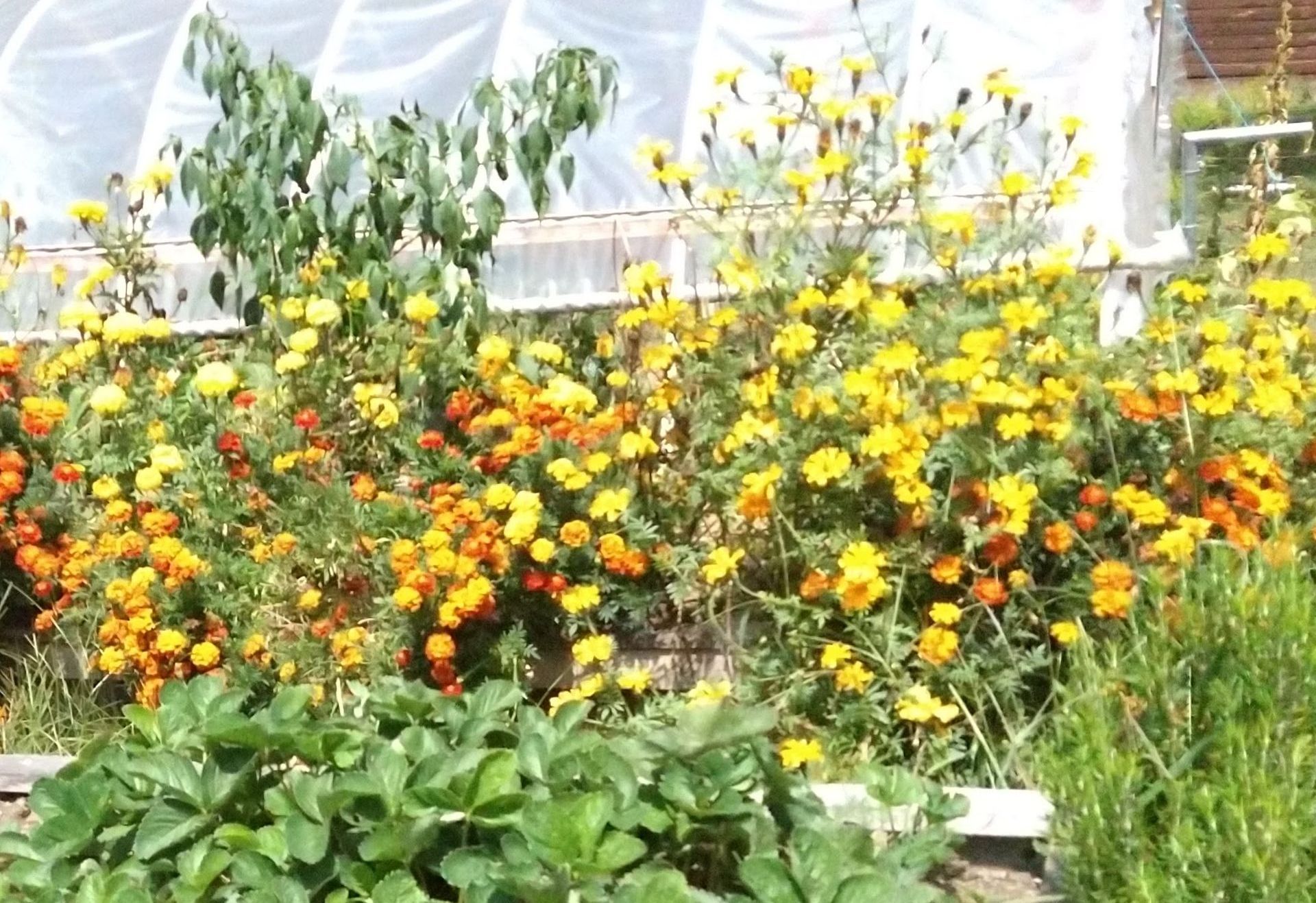
Mary Lou
mlgrowinglocalfood@gmail.com
